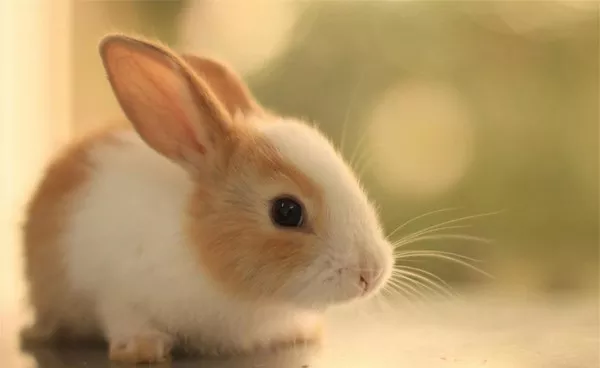Training a rabbit can be a rewarding experience for both the pet and the owner. While the time required to train a rabbit varies based on individual factors such as the rabbit’s personality, age, and the type of training, understanding the basics and following a consistent approach can significantly streamline the process. This article explores the timeline of rabbit training, providing insights into various aspects such as behavioral conditioning, litter training, tricks and commands, and socialization.
Understanding Rabbit Behavior
Natural Instincts
Rabbits are prey animals, which means they are naturally skittish and cautious. Understanding this instinct is crucial for training, as it affects how they react to new environments, people, and training sessions. They are also highly social animals that require companionship and mental stimulation.
Social Structure
In the wild, rabbits live in hierarchical social structures. This social nature can be leveraged during training, as they respond well to positive reinforcement and social interactions. Rabbits communicate through body language and sounds, and recognizing these signals can help in creating a bond and understanding their needs during training.
Initial Bonding and Trust Building
Creating a Safe Environment
Before any formal training begins, it is essential to create a safe and comfortable environment for your rabbit. This involves providing a spacious and secure living area, access to fresh water and hay, and safe hiding spots. A stress-free environment is the foundation of successful training.
Establishing Trust
The first step in training is to build trust with your rabbit. This can take anywhere from a few days to several weeks, depending on the rabbit’s personality and prior experiences. Spend time sitting quietly near your rabbit, allowing them to approach you. Offer treats and gentle petting to create positive associations.
Litter Training
Introduction to Litter Training
Litter training is one of the first practical trainings for a rabbit. Most rabbits can be litter trained relatively quickly, often within a few weeks, but it requires consistency and patience. Start by placing a litter box in the rabbit’s cage or play area and observe where they naturally choose to relieve themselves.
Reinforcing Litter Training
Place hay in or near the litter box, as rabbits often eat and go to the bathroom simultaneously. Every time your rabbit uses the litter box, reward them with a treat or gentle petting. Clean the box regularly but leave a small amount of soiled litter to reinforce the scent association.
Troubleshooting Common Issues
If your rabbit has accidents outside the litter box, consider placing multiple boxes around their space until they consistently use them. Gradually reduce the number of boxes as they become more reliable. Ensure the litter box is always clean and accessible.
Training Tricks and Commands
Basic Commands
Teaching a rabbit basic commands such as “come,” “sit,” and “stand” can be a fun and interactive way to bond with your pet. These commands typically take a few weeks to a few months for the rabbit to learn, depending on their temperament and the frequency of training sessions.
“Come” Command: Use a treat to lure your rabbit towards you while saying “come.” Repeat this several times a day, gradually increasing the distance. Reward your rabbit every time they successfully follow the command.
“Sit” Command: Gently push down on your rabbit’s rear while saying “sit” and giving a treat. With repetition, they will associate the word with the action and the reward.
“Stand” Command: Hold a treat above your rabbit’s head and say “stand.” Encourage them to rise on their hind legs to reach the treat. Reward and repeat.
Advanced Tricks
Once your rabbit masters basic commands, you can progress to more advanced tricks like jumping through hoops, spinning in circles, or fetching objects. These tricks can take several months to perfect and require daily practice and patience.
Hoop Jumping: Start with a low hoop and use a treat to guide your rabbit through it. Gradually increase the height as they become more confident.
Spinning: Hold a treat in front of your rabbit’s nose and move it in a circular motion, encouraging them to follow it with their body. Say “spin” as they complete the circle and reward them.
Fetching: Show your rabbit a small, lightweight object and toss it a short distance. Encourage them to pick it up and bring it back to you by rewarding them with a treat.
Socialization and Behavioral Conditioning
Positive Reinforcement
Positive reinforcement is the most effective method for training rabbits. This involves rewarding desired behaviors with treats, petting, or verbal praise. Consistent positive reinforcement helps reinforce good behavior and makes the training process enjoyable for your rabbit.
Desensitization
Rabbits can be sensitive to new experiences, sounds, and people. Desensitization involves gradually exposing your rabbit to new stimuli in a controlled and positive manner. This process can take several weeks to months, depending on the rabbit’s personality and prior experiences.
New People: Introduce new people slowly, allowing your rabbit to approach them at their own pace. Use treats to create positive associations.
New Environments: Allow your rabbit to explore new spaces gradually, starting with small, familiar areas and gradually expanding.
Loud Noises: Expose your rabbit to different sounds at low volumes, gradually increasing the volume as they become more comfortable.
Handling and Grooming
Training your rabbit to tolerate handling and grooming is crucial for their health and well-being. This process can take a few weeks to several months, depending on the rabbit’s temperament and prior handling experiences.
Handling: Start with short, gentle handling sessions, gradually increasing the duration as your rabbit becomes more comfortable. Use treats and gentle petting to reward calm behavior.
Grooming: Introduce grooming tools gradually, allowing your rabbit to sniff and explore them before using them. Begin with short grooming sessions, using treats to reward calm behavior.
See Also: How to Make Your Rabbit’s Hay Less Dusty?
Factors Affecting Training Time
Age and Temperament
Younger rabbits tend to learn faster than older ones, as they are more curious and adaptable. However, older rabbits can still be trained successfully with patience and consistency. The individual temperament of the rabbit also plays a significant role; more confident and outgoing rabbits may pick up training quicker than shy or timid ones.
Training Consistency
Consistency is key in rabbit training. Regular, short training sessions are more effective than sporadic, longer ones. Daily sessions of 5-10 minutes help reinforce learned behaviors without overwhelming your rabbit.
Owner Experience
Experienced rabbit owners may find it easier and quicker to train a rabbit, as they are more familiar with rabbit behavior and effective training techniques. New rabbit owners may take longer as they learn and adapt to their pet’s needs.
Practical Uses of Trained Behaviors
Improved Bonding
Training sessions are excellent opportunities to bond with your rabbit. Positive interactions during training strengthen the trust and relationship between you and your pet, leading to a more harmonious and enjoyable companionship.
Easier Care and Handling
Trained rabbits are easier to care for and handle. Litter training reduces mess and makes cleaning easier. Training your rabbit to tolerate handling and grooming ensures they receive necessary care, such as nail trims and health checks, without causing stress.
Enhanced Mental Stimulation
Training provides mental stimulation, preventing boredom and promoting overall well-being. Engaging your rabbit in learning new commands and tricks keeps their mind active and helps prevent behavioral issues that can arise from boredom.
Common Challenges and Solutions
Patience and Persistence
Training a rabbit requires patience and persistence. Some days may be more challenging than others, and progress may seem slow. It is essential to remain consistent and positive, celebrating small victories along the way.
Addressing Behavioral Issues
Rabbits, like any pets, can exhibit unwanted behaviors such as biting, digging, or chewing. Identifying the root cause of these behaviors is crucial. Often, providing more mental stimulation, toys, and positive reinforcement for desired behaviors can mitigate these issues.
Adjusting Training Techniques
Every rabbit is unique, and what works for one may not work for another. Be prepared to adjust your training techniques based on your rabbit’s responses. If one method is not effective, try another approach while maintaining a positive and patient attitude.
Conclusion
Training a rabbit is a journey that requires time, patience, and consistency. While the timeline for training varies based on individual factors, understanding rabbit behavior, establishing trust, and using positive reinforcement can significantly enhance the process. Whether it’s litter training, teaching tricks, or socializing your rabbit, the effort invested in training will lead to a happier, well-adjusted pet and a stronger bond between you and your rabbit. With dedication and love, you can successfully train your rabbit, enriching both your lives in the process.
Related Topics:


























